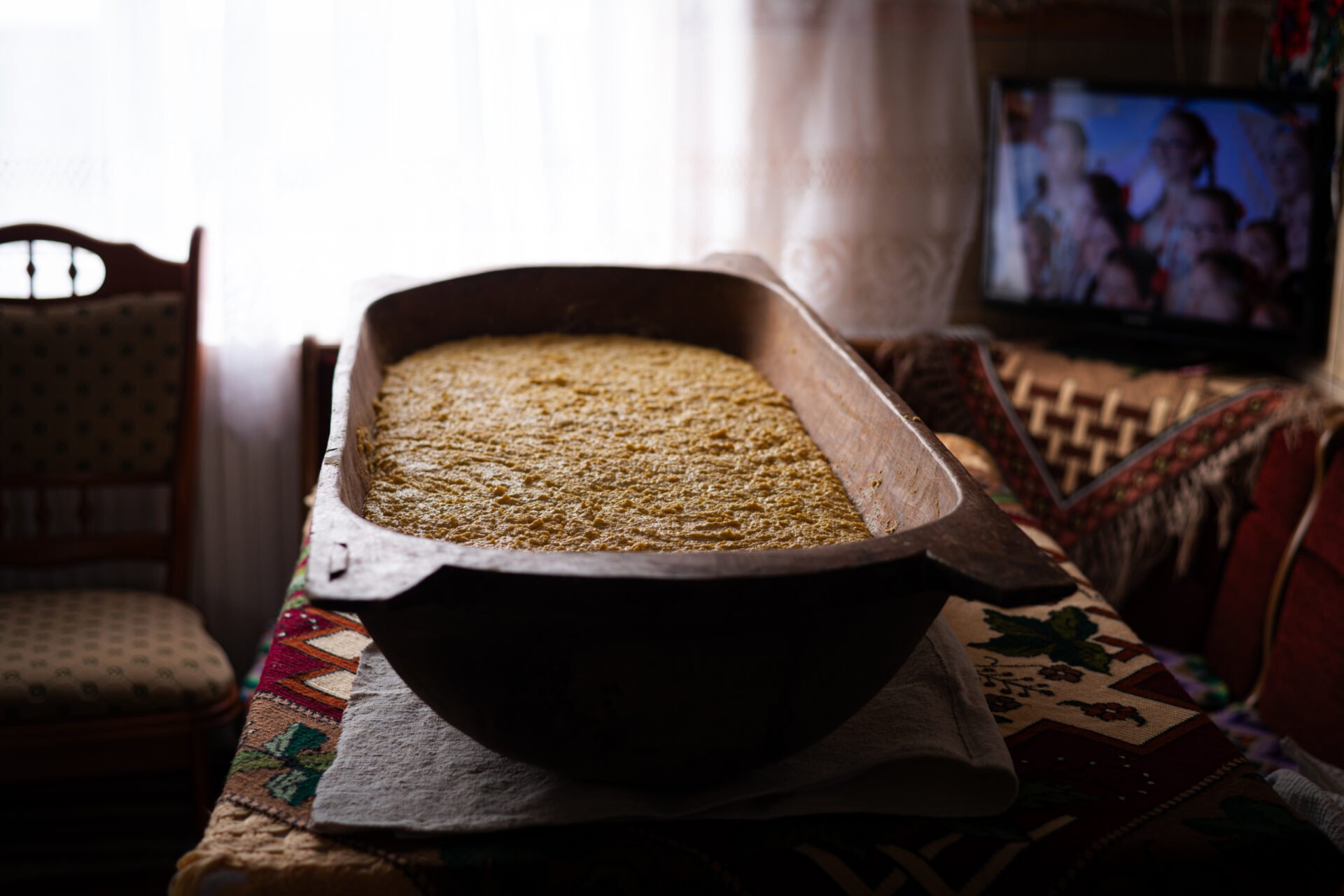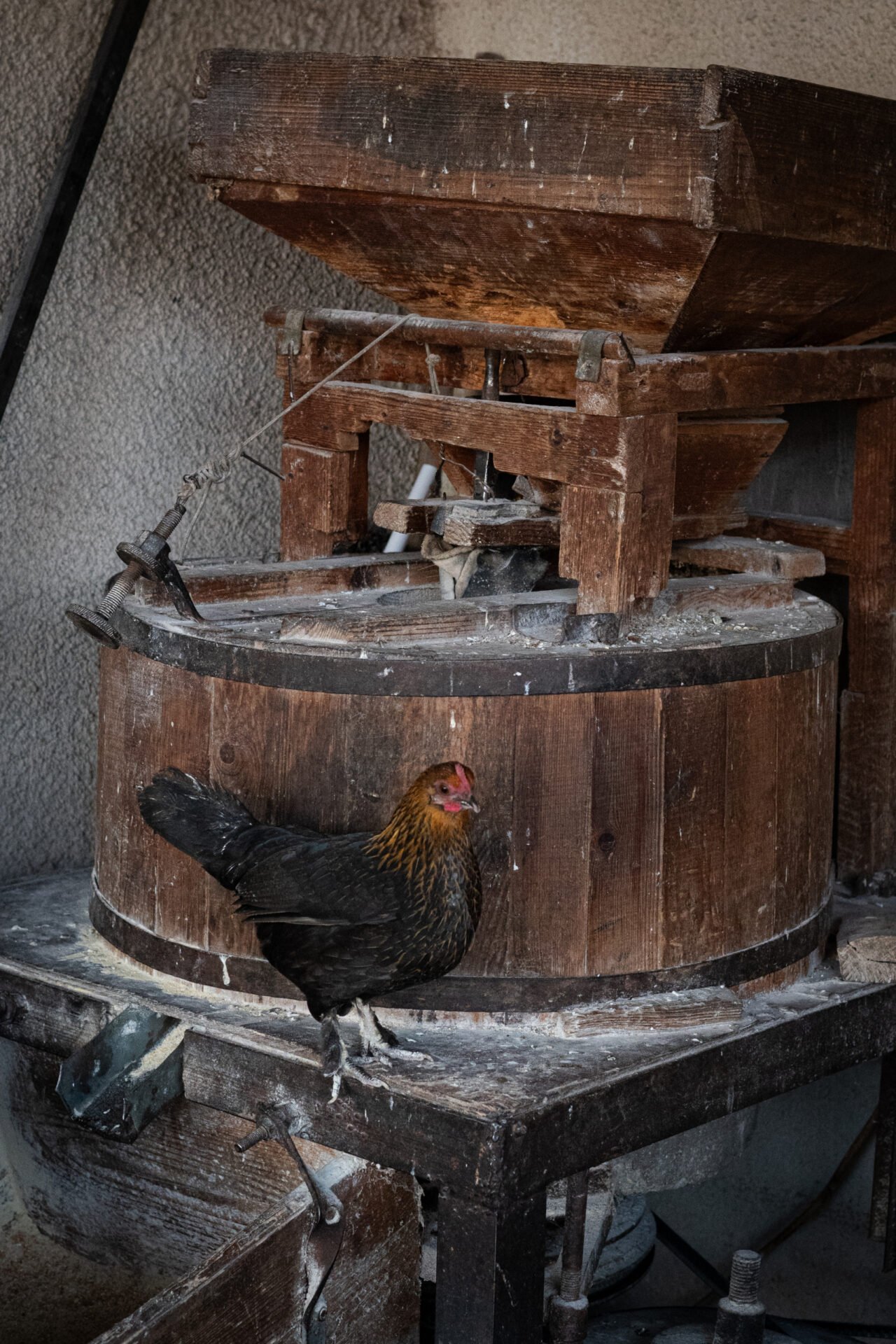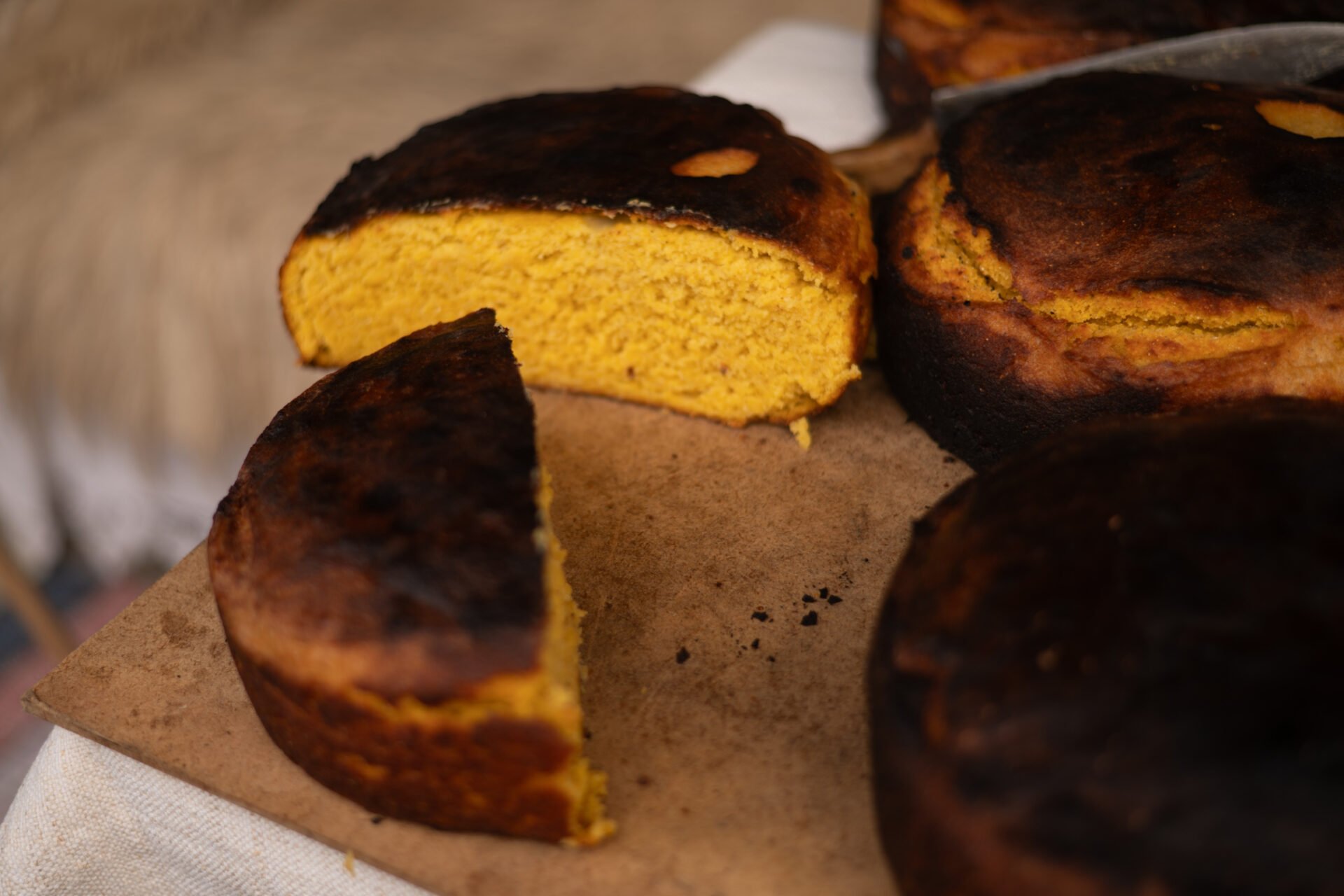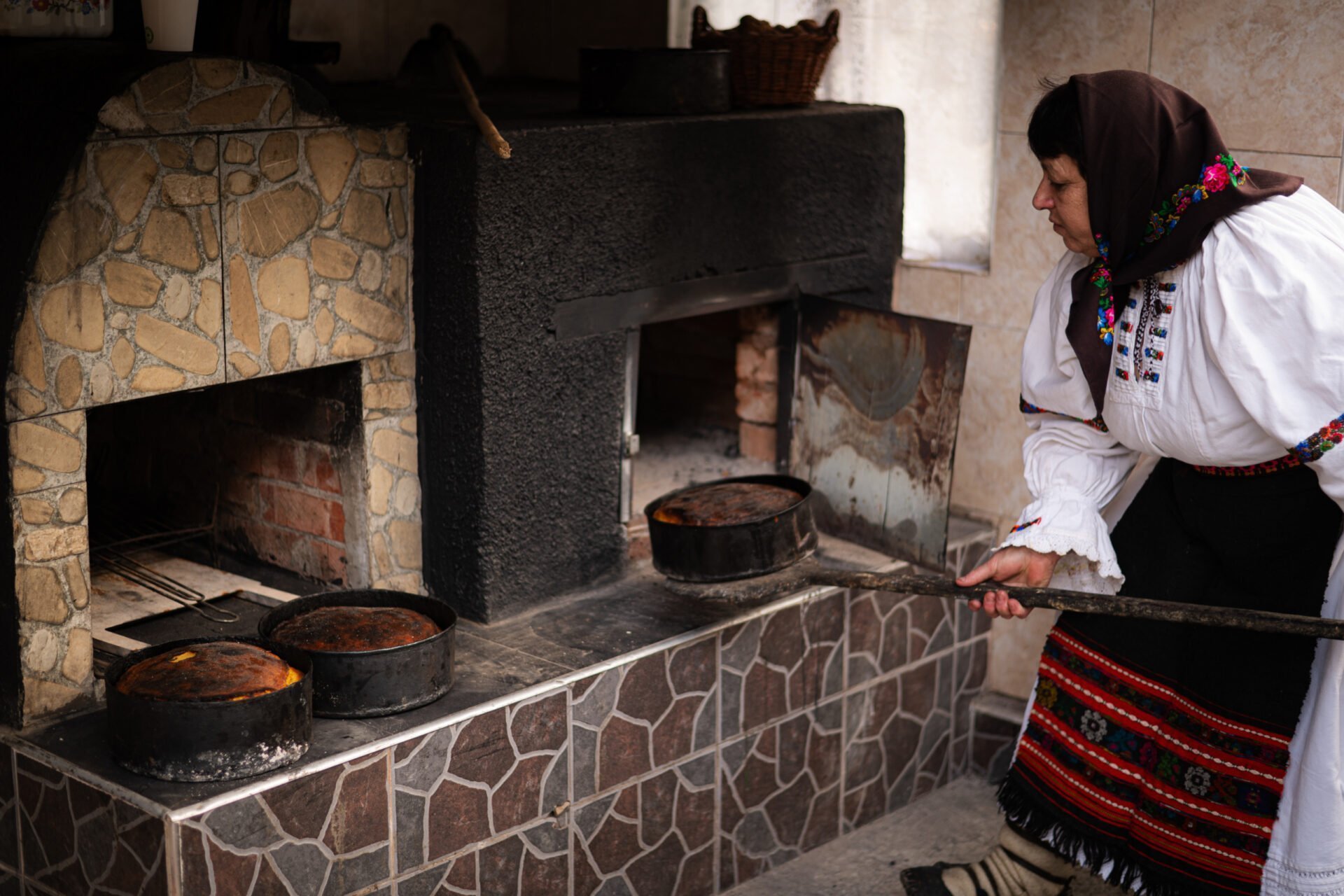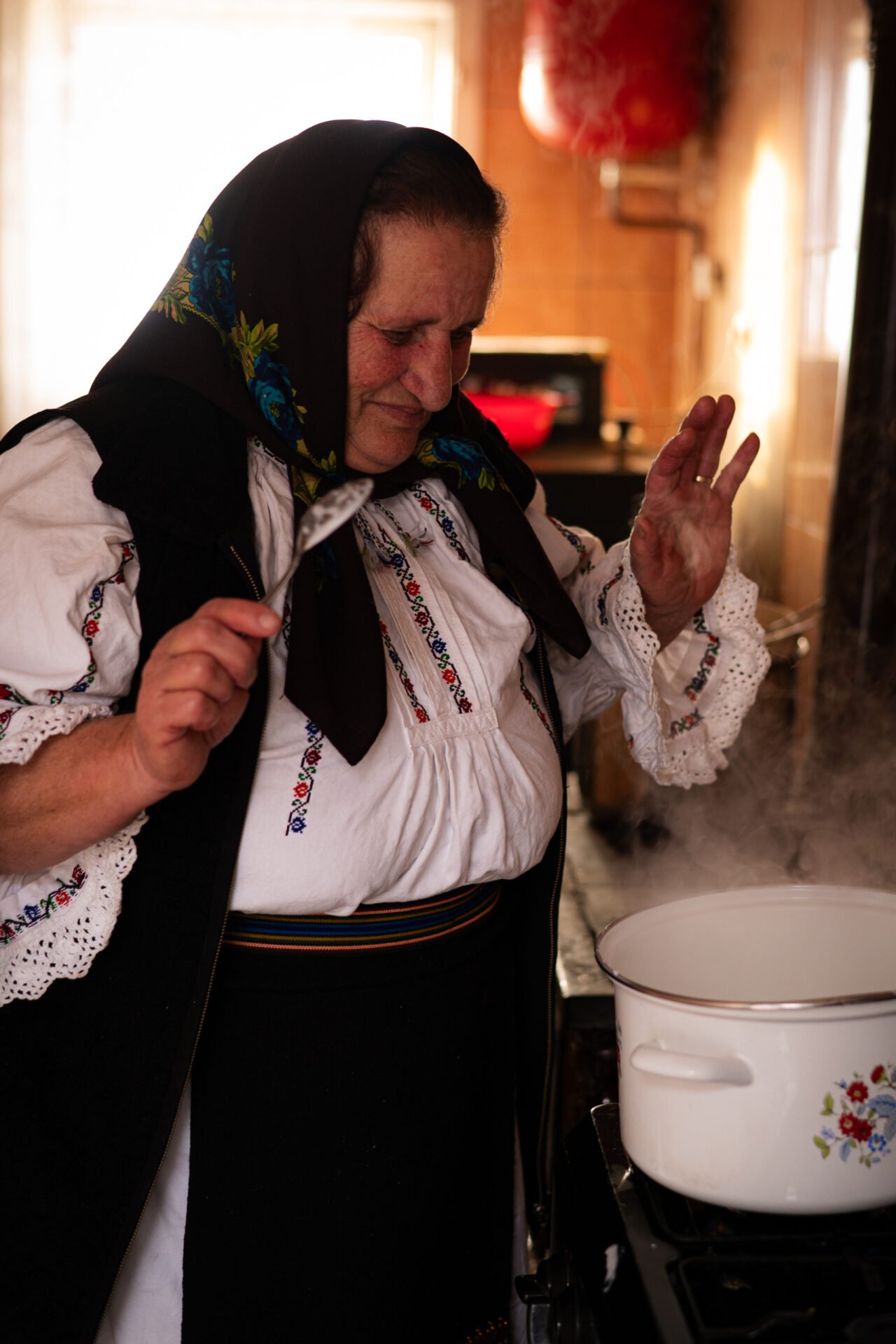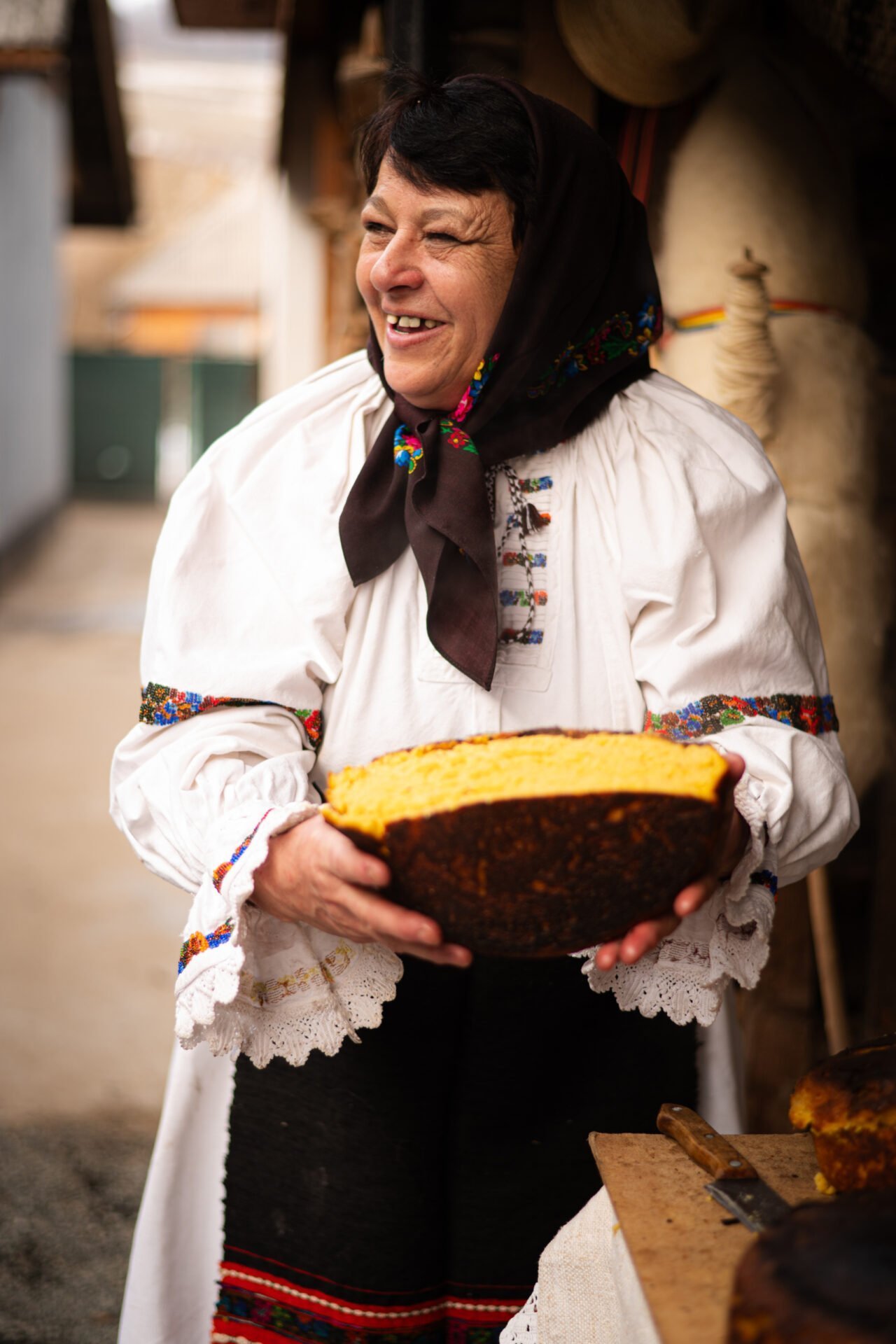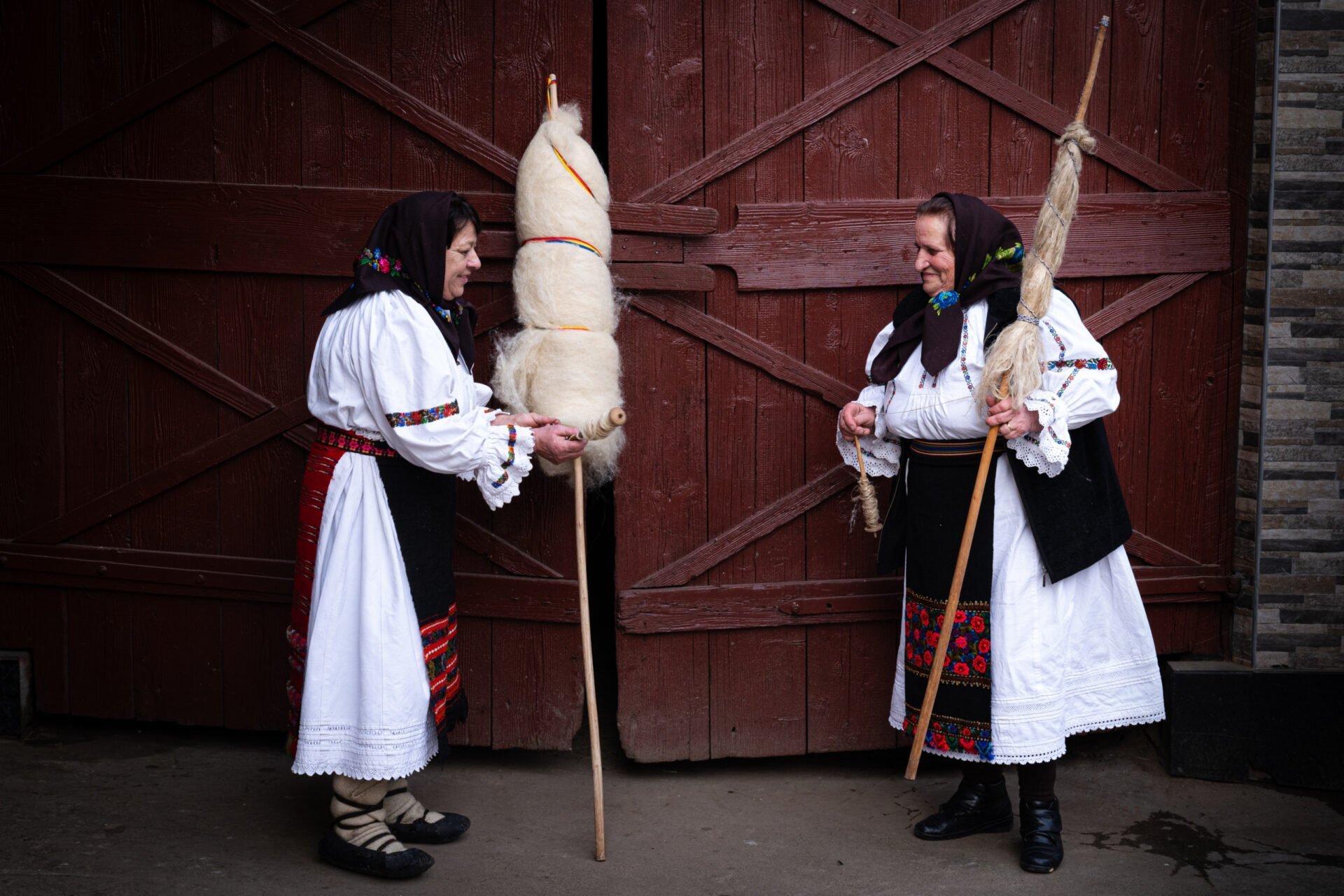Words: Andrea Dimofte
Photos: Lucía Blasco
August 2023
In a world where different types of food are constantly vying for our attention, there is a humble staple that has remained consistent: bread. The love for bread is difficult to overstate. It nurtures our body and soul, imprinting itself on our collective consciousness. Like a warm hug, bread symbolizes comfort and connection. And the good news: there are many kinds, from the crispy French baguette to the soft and salty Italian focaccia. Today, I’ll write about the Romanian cornbread.
When it comes to corn-based Romanian dishes, cornbread is the underdog. Corn holds a significant place in the Romanian consciousness. The grain has become a main character in Romanian cuisine, assimilating into many traditional dishes. But corn is not native to Romania. It arrived here from the West during the 17th century after the Spanish brought it to Europe from Mexico. Romania’s territory became a corn’s oasis, and today, Romania is among Europe’s top three corn producers. For the 2022 harvest year, it ranked just second after France. You can ask any Romanian about their relationship with corn, and they will likely give you a passionate answer.
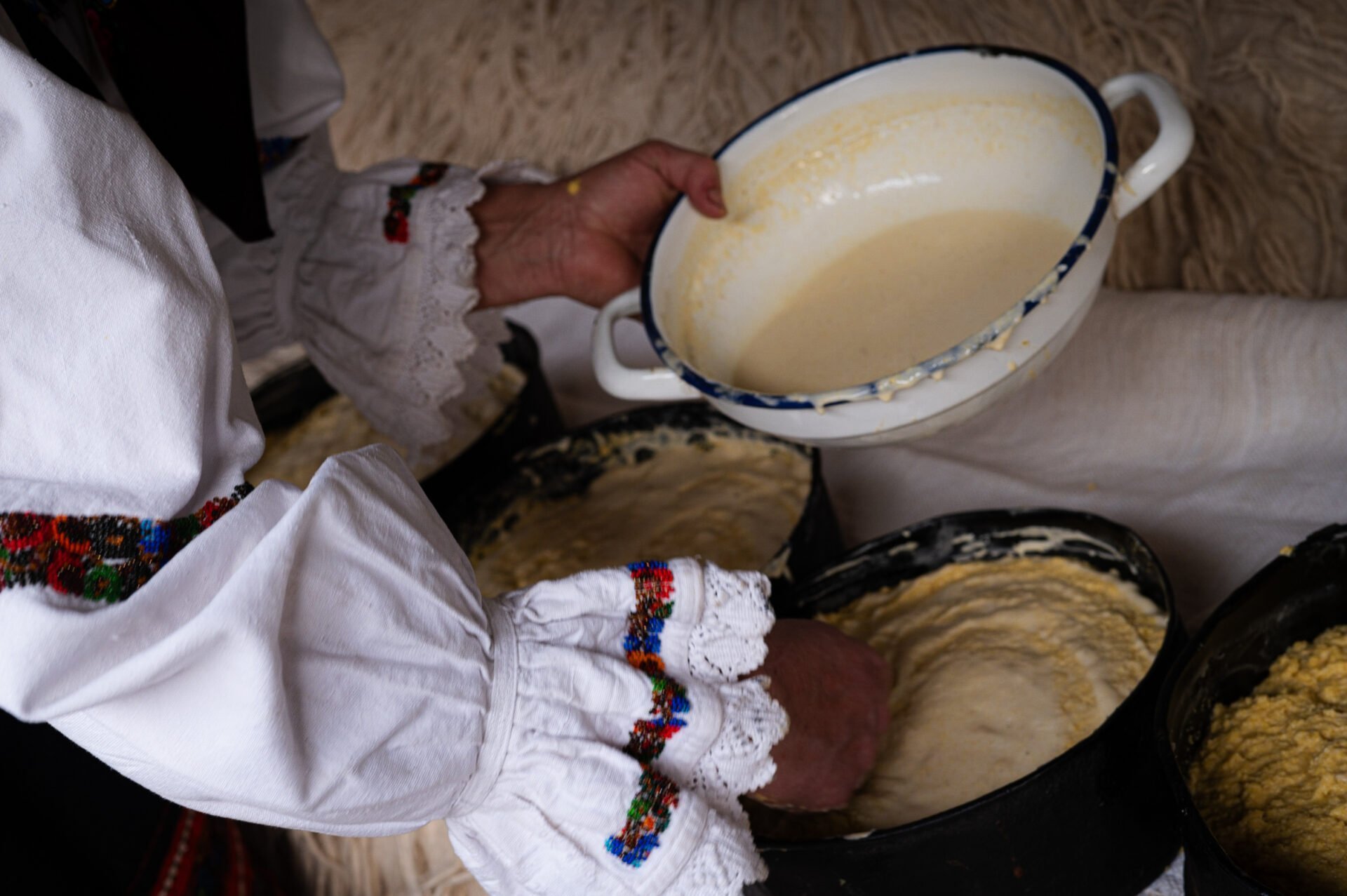
Corn is hearty, cheap, and adaptable for many cooking methods, so it has become a popular ingredient. You can find pufuleți – corn puffs that closely resemble cheese puffs. These were ones of the few snacks available under communism. They boomed in availability and popularity after the revolution. They are still popular today, evoking a sense of sentimentality.
But the corn superstar is mămăligă – a cornmeal porridge or a type of polenta. Having started from humble beginnings in rural areas, mămăligă is one of Romania’s most beloved traditional foods: it can be eaten as a main dish, with cheese and sour cream, or as a side to grilled fish or sarmale, cabbage rolls often filled with minced meat. It can be eaten for dinner, lunch, and breakfast, particularly in rural areas. It can even be a substitute for bread! Many families will argue about the “right” way to prepare it. And while it holds historical and cultural significance, some trendier restaurants are modernizing and reinterpreting how this type of polenta is eaten. From the many recipes for polenta to even how we eat corn cobs – grilled, boiled, with salt or other spices, shaved down, or eaten straight off the cob – Romanians love corn.
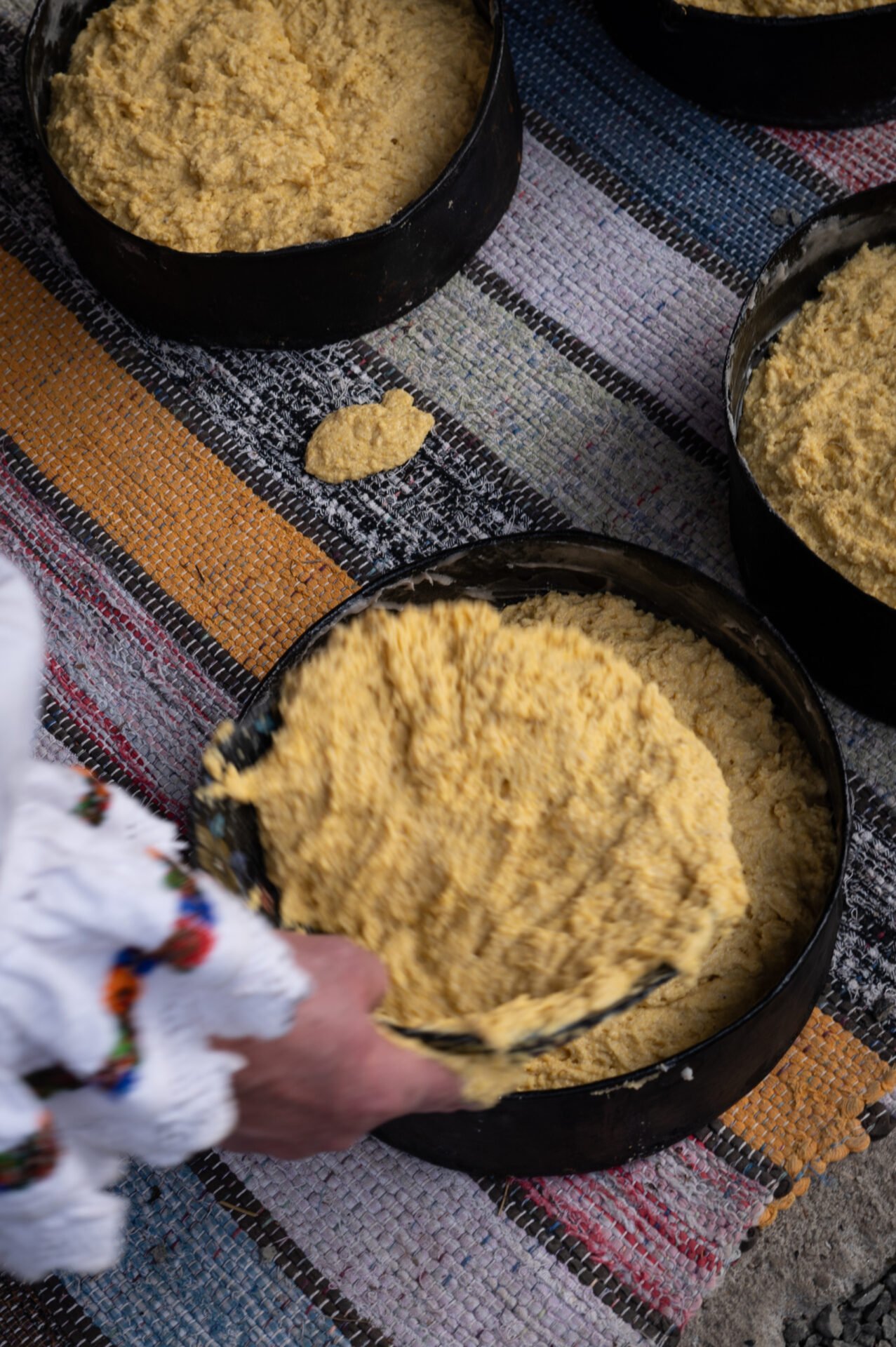
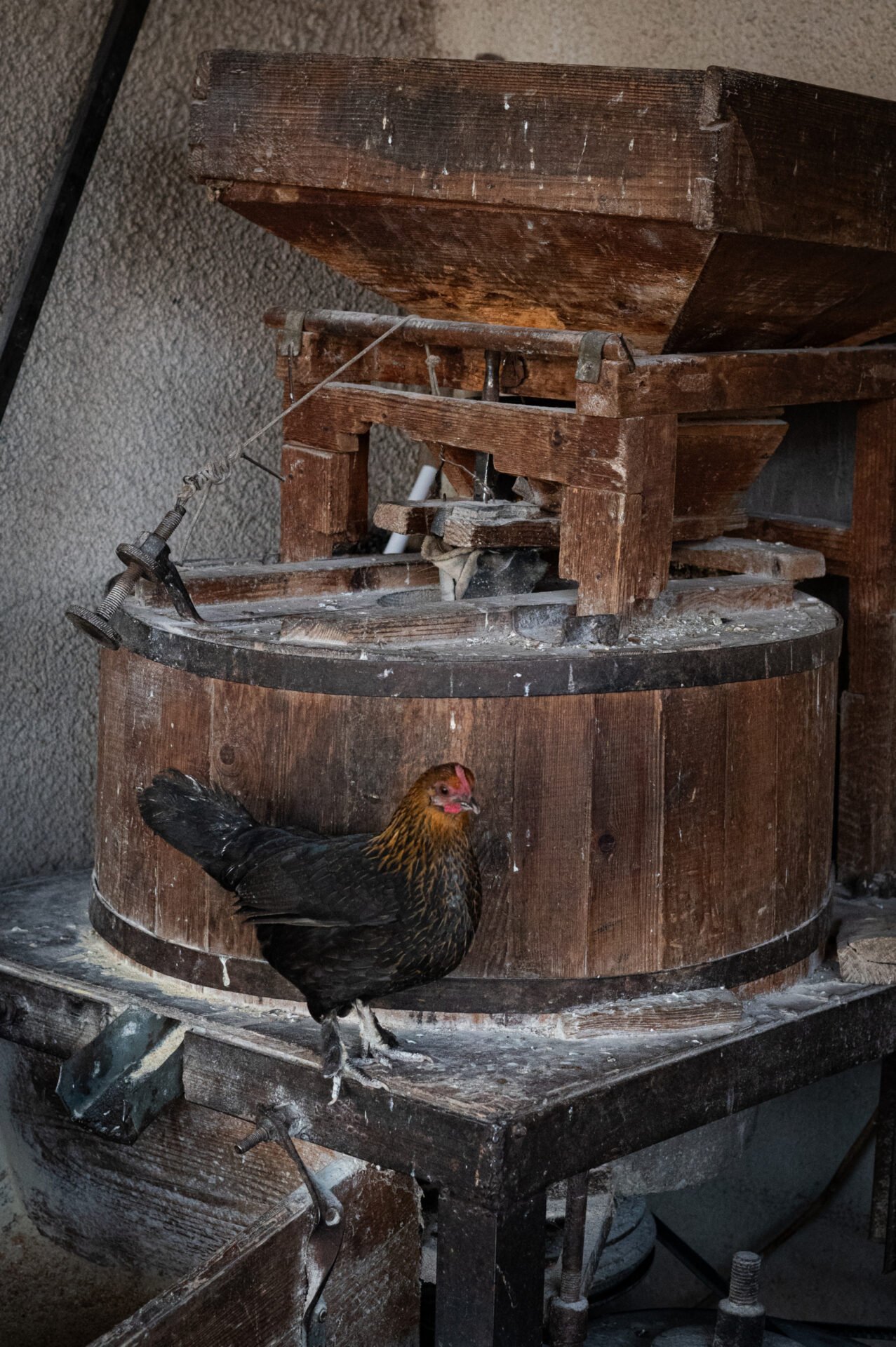
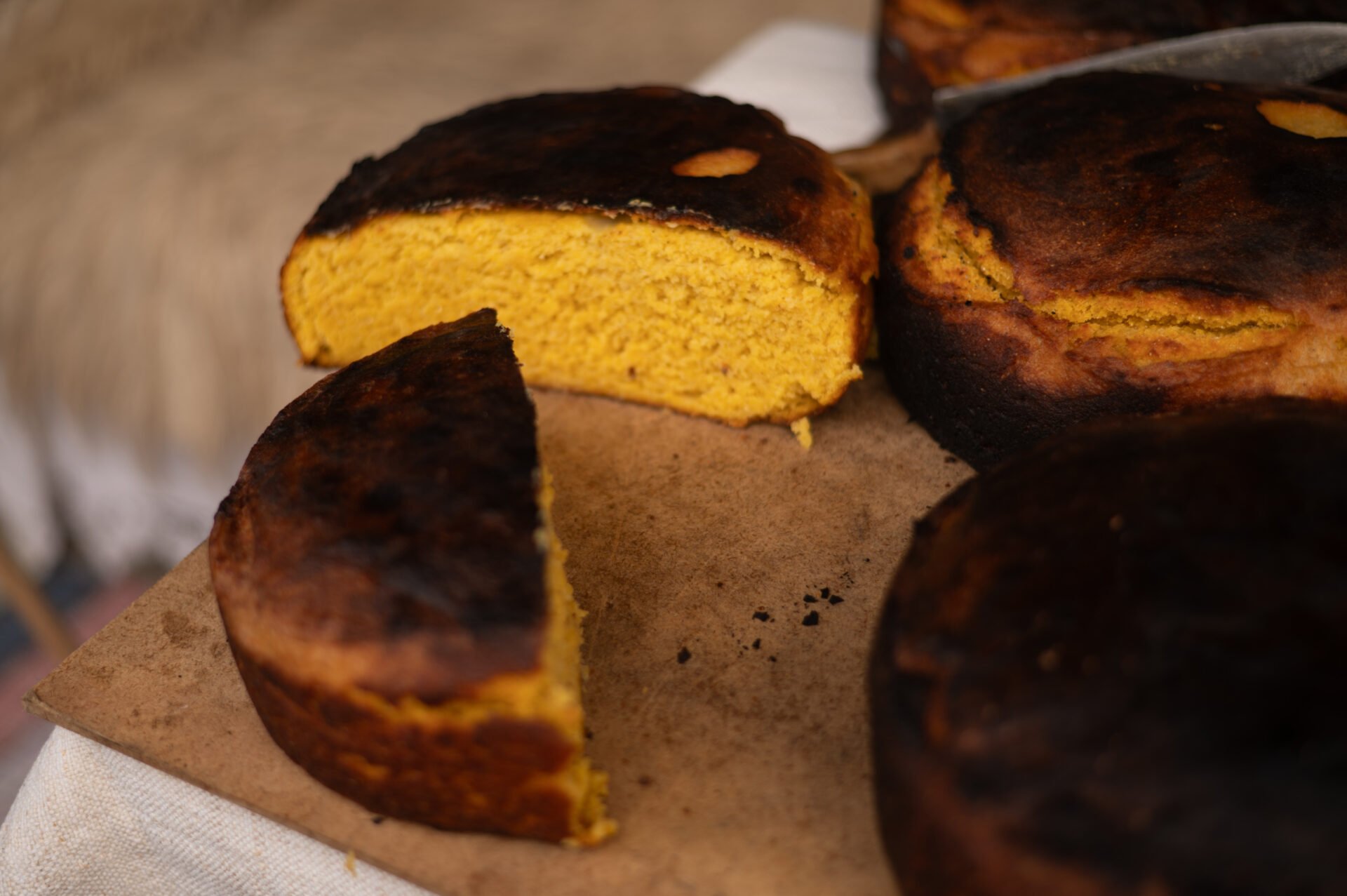
The Golden Masterpiece
Romania has a strong agricultural tradition, with many communities relying on corn for farming. It is only natural that cornbread is more popular here, in the countryside. In Suciu de Jos, a village in Maramureș, northern Romania, making bread is like a ritual. Lucreția Filip, 63, and Ludovica Kvechita, 58, are excited to prepare cornbread – from scratch. They are good friends. Upon seeing the camera, they insist on putting on their costum popular (folk, traditional clothing). They are both from a nearby village, but have been living here for many years. “Regarding food, many things are done uniquely here in Maramureș. We even have different names for ingredients,” says Ludovica. “For instance, we call potatoes picioci instead of cartofi.”
Ludovica’s kitchen is adorned with traditional tapestry. In the corner, a small TV shows women dancing to folk songs. I notice the dry batter resting in a large wooden bowl, colloquially called copaie. It already smells good. Lucreția and Ludovica made the flour themselves: untreated, by mixing corn and barley on a stone mill in their backyard. “You can truly taste the difference when the flour is homemade, compared to store-bought,” proudly declares Lucreția. While they sometimes make wheat bread too, “if you make it from scratch, cornbread is better for your silhouette,” says Lucreția, this time giggling.
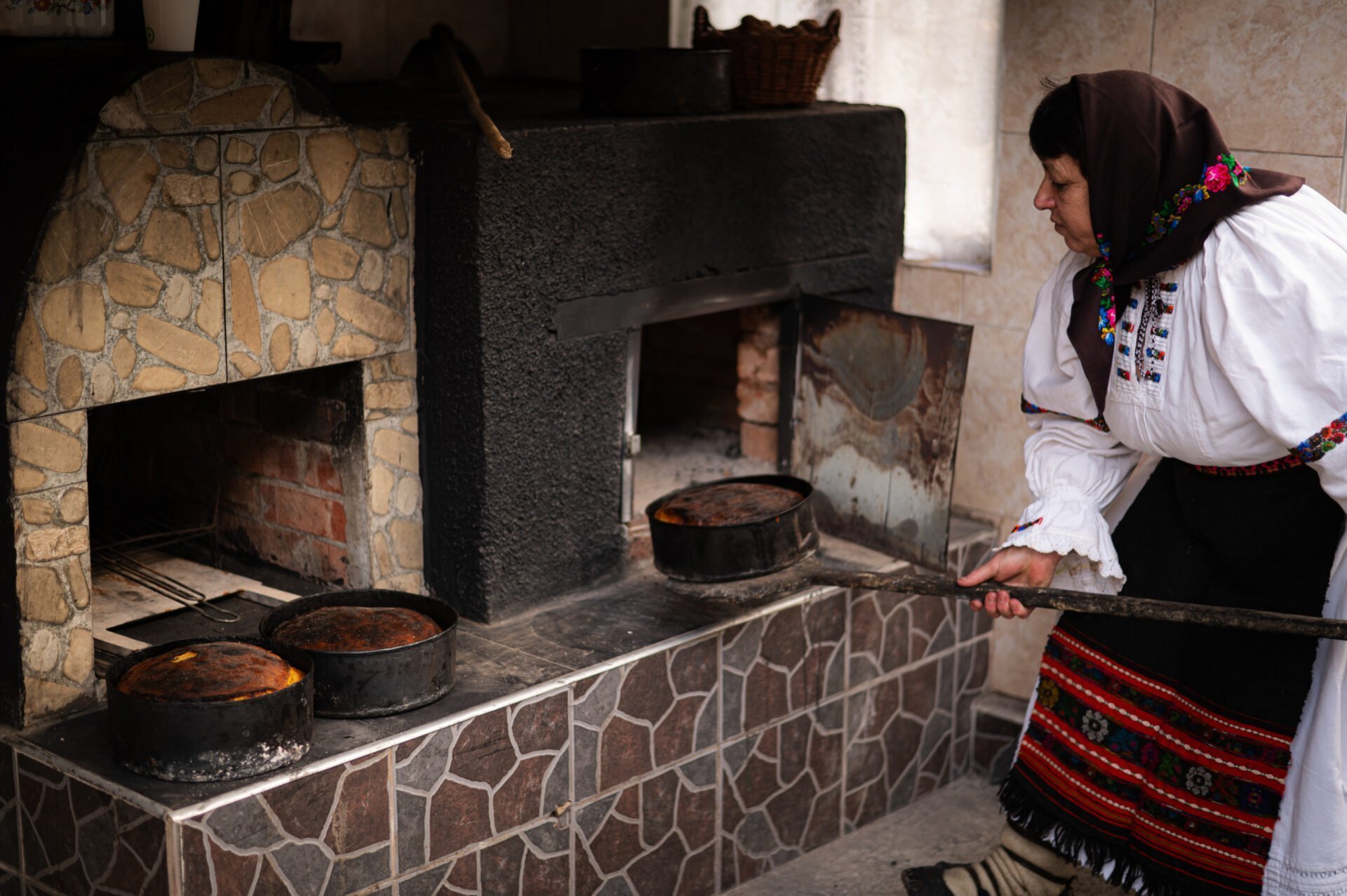
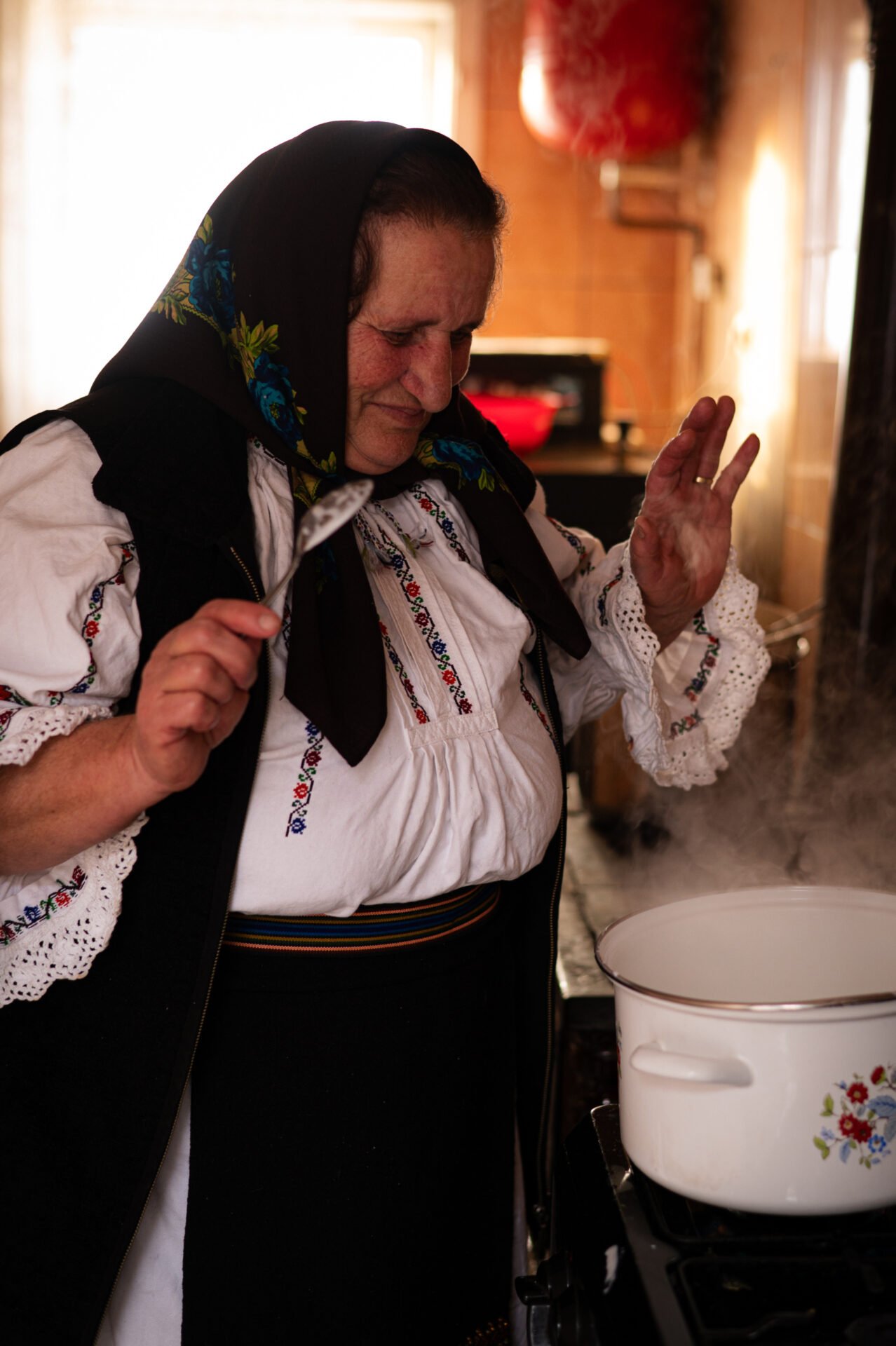
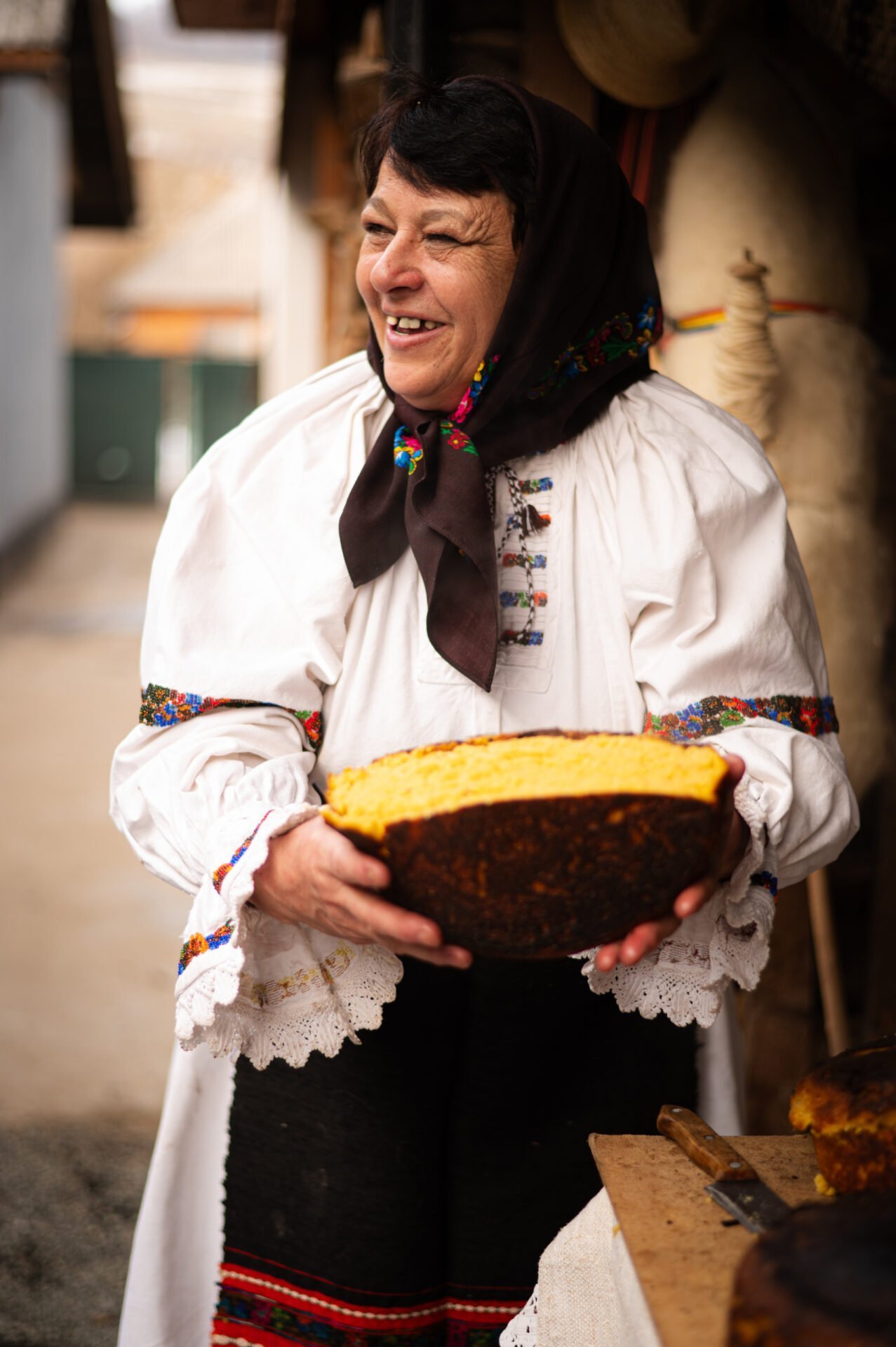
They then take the wooden bowl to their backyard, where their masonry oven is also located. They begin to place the dry batter into iron skillets. Their hands move swiftly. They whisk the wet ingredients separately, then mix them into the skillets. By this point, they have created somewhat of an assembly line, and the pace quickens. With great care and tenderness, they place the now ready batter inside the oven, pushing it towards the fire.
“Cornbread is sacred here,” Ludovica says as we wait for the bread to grow. “We dip it in sheep’s broth when we go to mass, for Easter, or for pomană” (a traditional ritual involving food offerings after someone’s passing). Religion plays a significant role in their daily lives here and is often intertwined with food. Occasionally, the bread is dipped in donkey milk, so Lucreția rushes to quickly heat some up in the kitchen. Naturally, the milk they use is fresh.
A few hours later, the moment arrives. Lucreția and Ludovica retrieve the golden masterpieces from the oven. They both now seem relaxed, exchanging proud glances. We wait patiently, observing the perfectly crisp crust as it cools. Then, with a touch of humor and ease, they flip the bread, removing it from the skillet that has been its home. They bring out the milk and cut a few slices of the loaf. Each bite offers a crunchy resistance before surrendering to reveal the tender crumbly interior. Inspired by their choice, I also decide to dip it into the milk. It’s a sweet flavor with a savory undertone. It tastes heavenly.
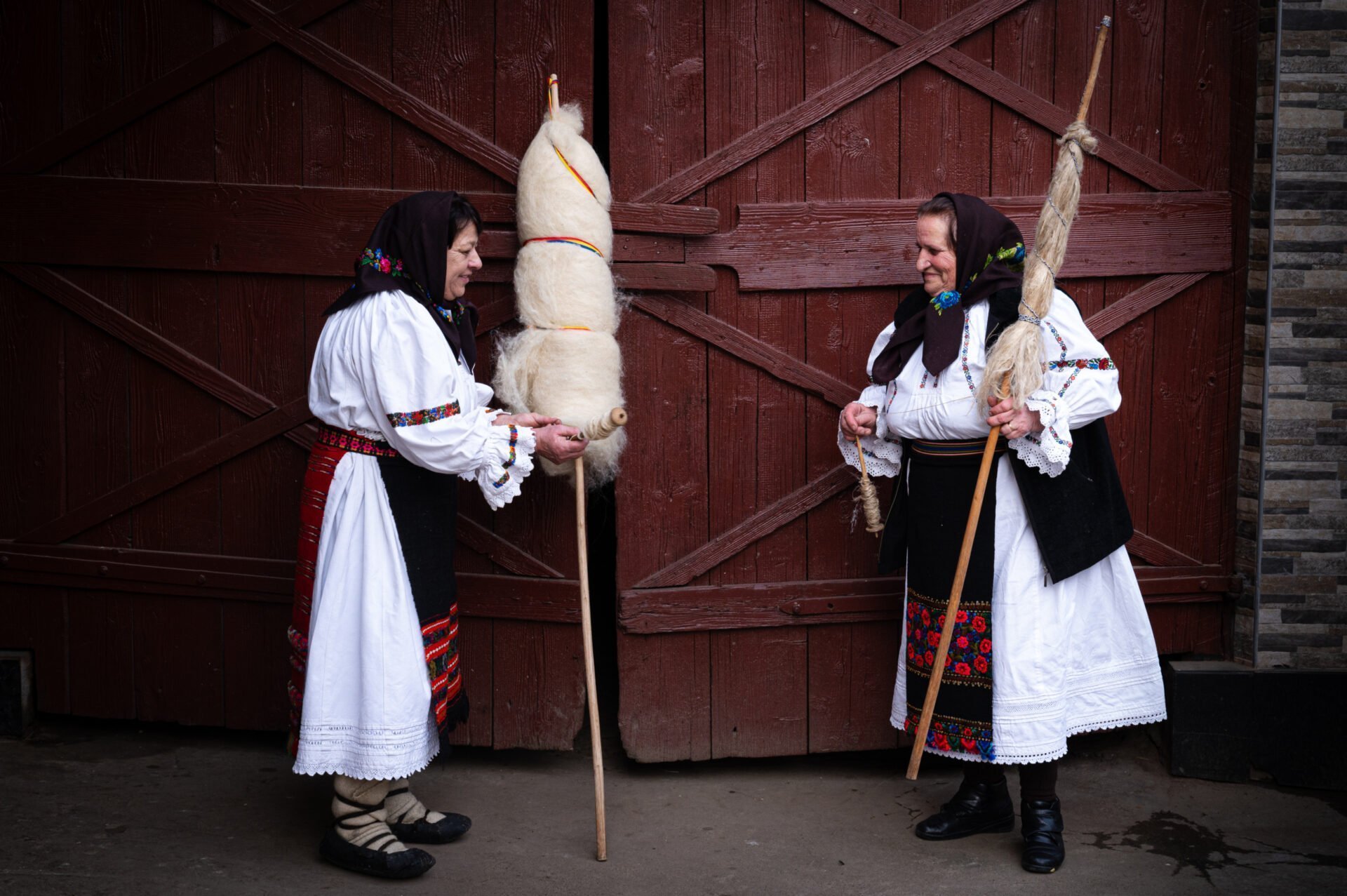
Our Heroes
Lucreția and Ludovica are not only heroes in the kitchen. They take pride in keeping Romania’s rural traditions alive. They contribute to their community by making traditional garments in a vibrant mix of colors. These tapestries dress up local festivals and celebrations, while their clothing is worn by their peers or sold at local markets. Lucreția and Ludovica also take care of orphaned children with the help of their husbands. I met Claudiu, an 8-year-old boy who kept us company while they made the cornbread. He is one of the children they support. When asked about his favorite meal, the answer is pasta. Lucreția smiles, placing her hand on his shoulder. “Some of these kids have been brought to us since they were 1 year old. Others came straight from the hospital, after being abandoned by their mothers,” she explains.
Ludovica has her own children: a daughter and a son, both of whom completed their university studies in Cluj-Napoca, one of the most up-and-coming cities just a few hours away. They now live in Italy, working in the hospitality and agriculture sectors. This is a common scenario for many families in the Romanian countryside. Often, the younger generation departs for cities or other countries. Economic disparities, limited prospects, and a yearning for modernization fuel this exodus. Nonetheless, Ludovica notes, “they come back with a big appetite and leave with suitcases filled with fresh local produce.” She smiles as she hands me another loaf of cornbread. “Have some more!”

